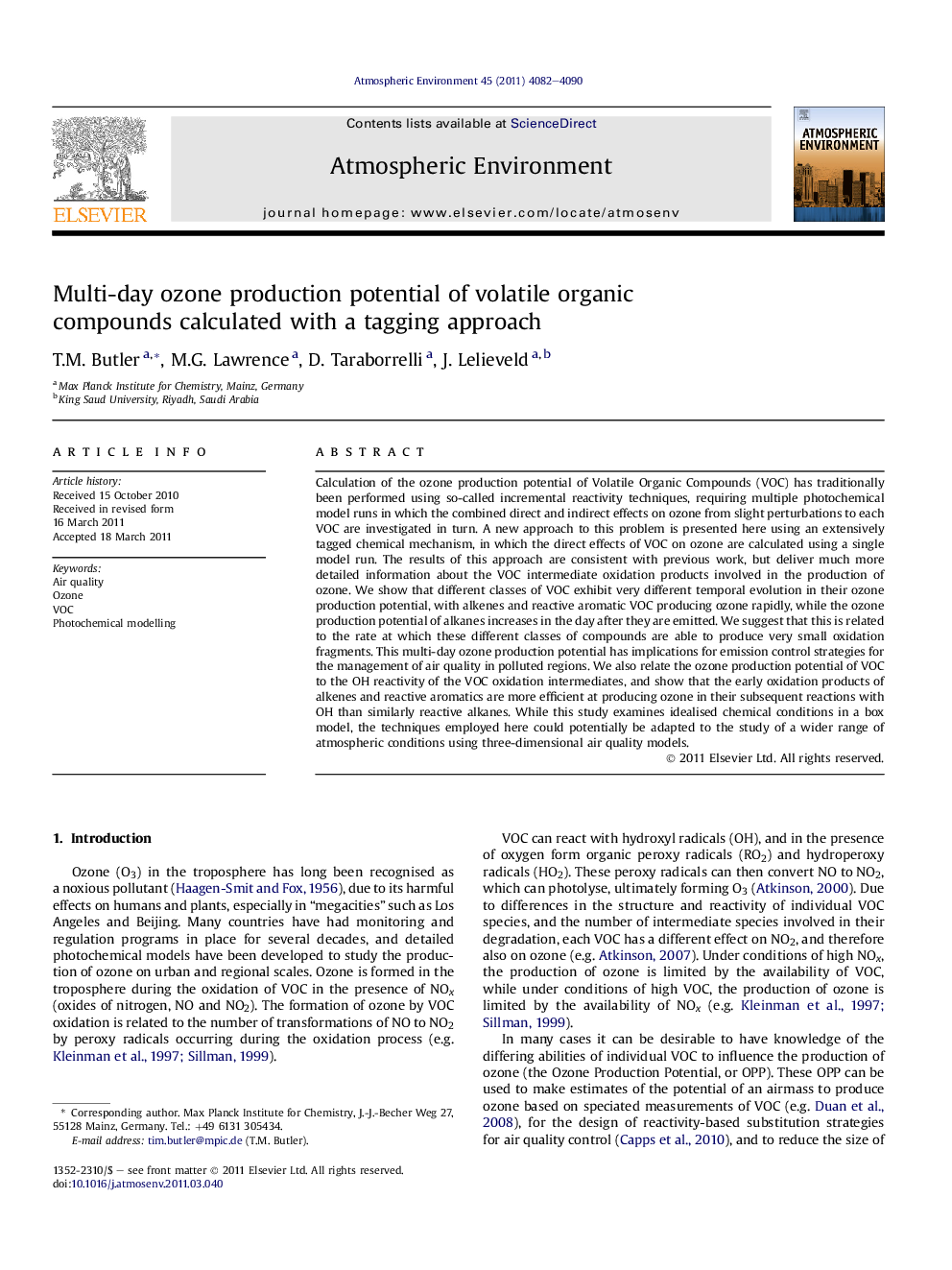| Article ID | Journal | Published Year | Pages | File Type |
|---|---|---|---|---|
| 4439828 | Atmospheric Environment | 2011 | 9 Pages |
Calculation of the ozone production potential of Volatile Organic Compounds (VOC) has traditionally been performed using so-called incremental reactivity techniques, requiring multiple photochemical model runs in which the combined direct and indirect effects on ozone from slight perturbations to each VOC are investigated in turn. A new approach to this problem is presented here using an extensively tagged chemical mechanism, in which the direct effects of VOC on ozone are calculated using a single model run. The results of this approach are consistent with previous work, but deliver much more detailed information about the VOC intermediate oxidation products involved in the production of ozone. We show that different classes of VOC exhibit very different temporal evolution in their ozone production potential, with alkenes and reactive aromatic VOC producing ozone rapidly, while the ozone production potential of alkanes increases in the day after they are emitted. We suggest that this is related to the rate at which these different classes of compounds are able to produce very small oxidation fragments. This multi-day ozone production potential has implications for emission control strategies for the management of air quality in polluted regions. We also relate the ozone production potential of VOC to the OH reactivity of the VOC oxidation intermediates, and show that the early oxidation products of alkenes and reactive aromatics are more efficient at producing ozone in their subsequent reactions with OH than similarly reactive alkanes. While this study examines idealised chemical conditions in a box model, the techniques employed here could potentially be adapted to the study of a wider range of atmospheric conditions using three-dimensional air quality models.
► New method for calculating Ozone Production Potential of VOC. ► Greater level of mechanistic detail than previous techniques. ► Ozone production related to structure and reactivity of VOC oxidation intermediates. ► Ozone Production Potential of alkanes increases over multiple days.
